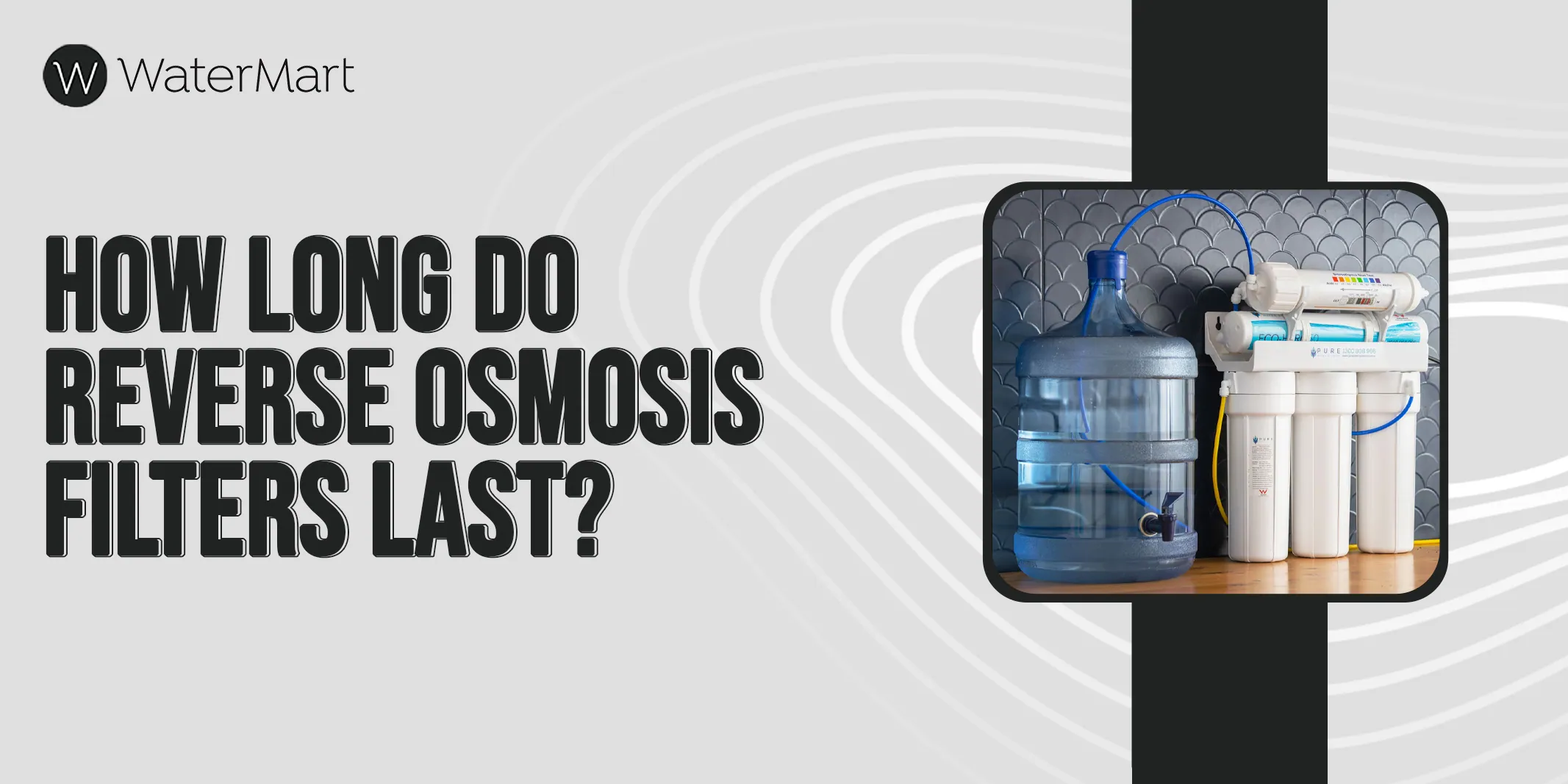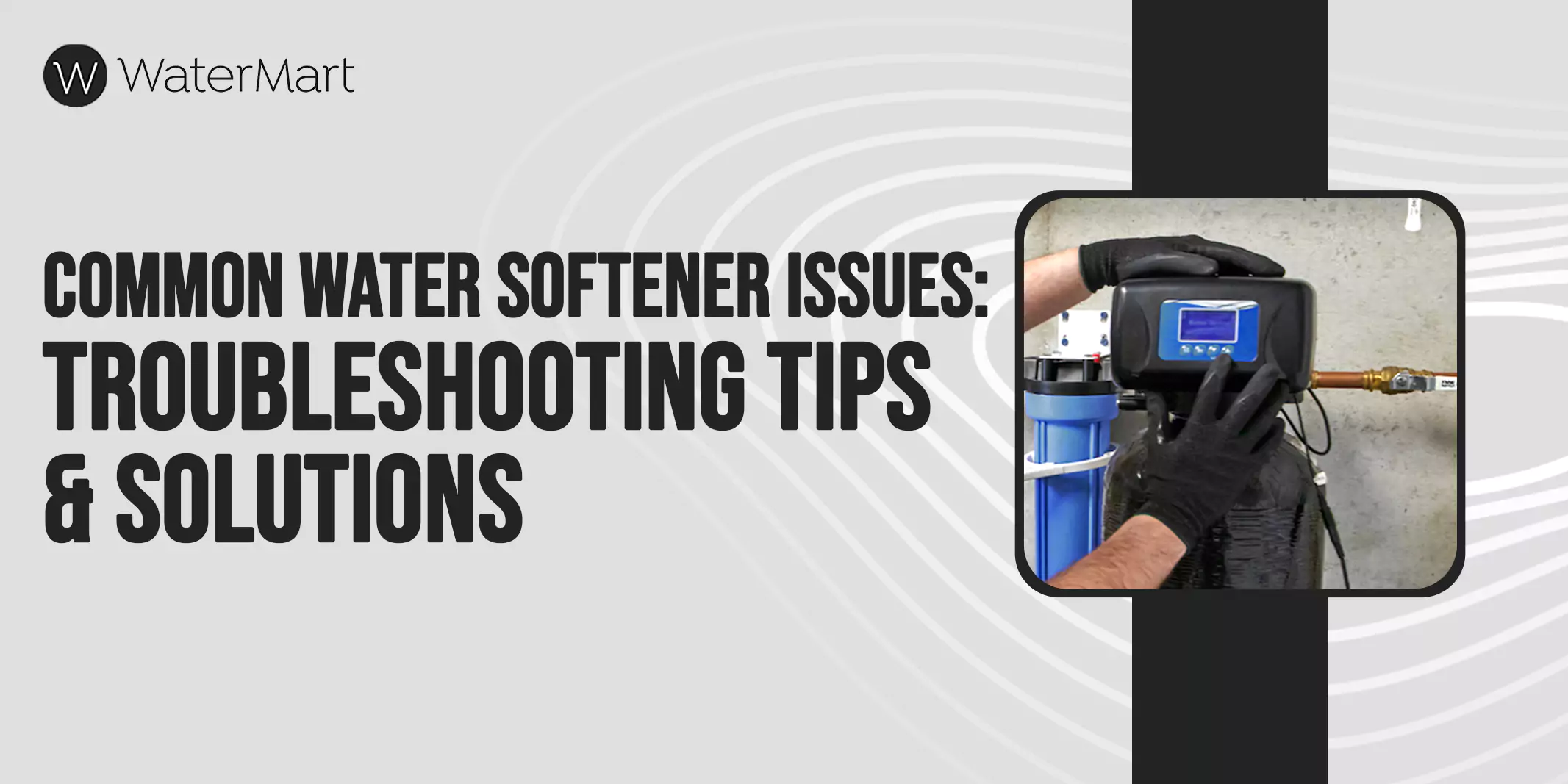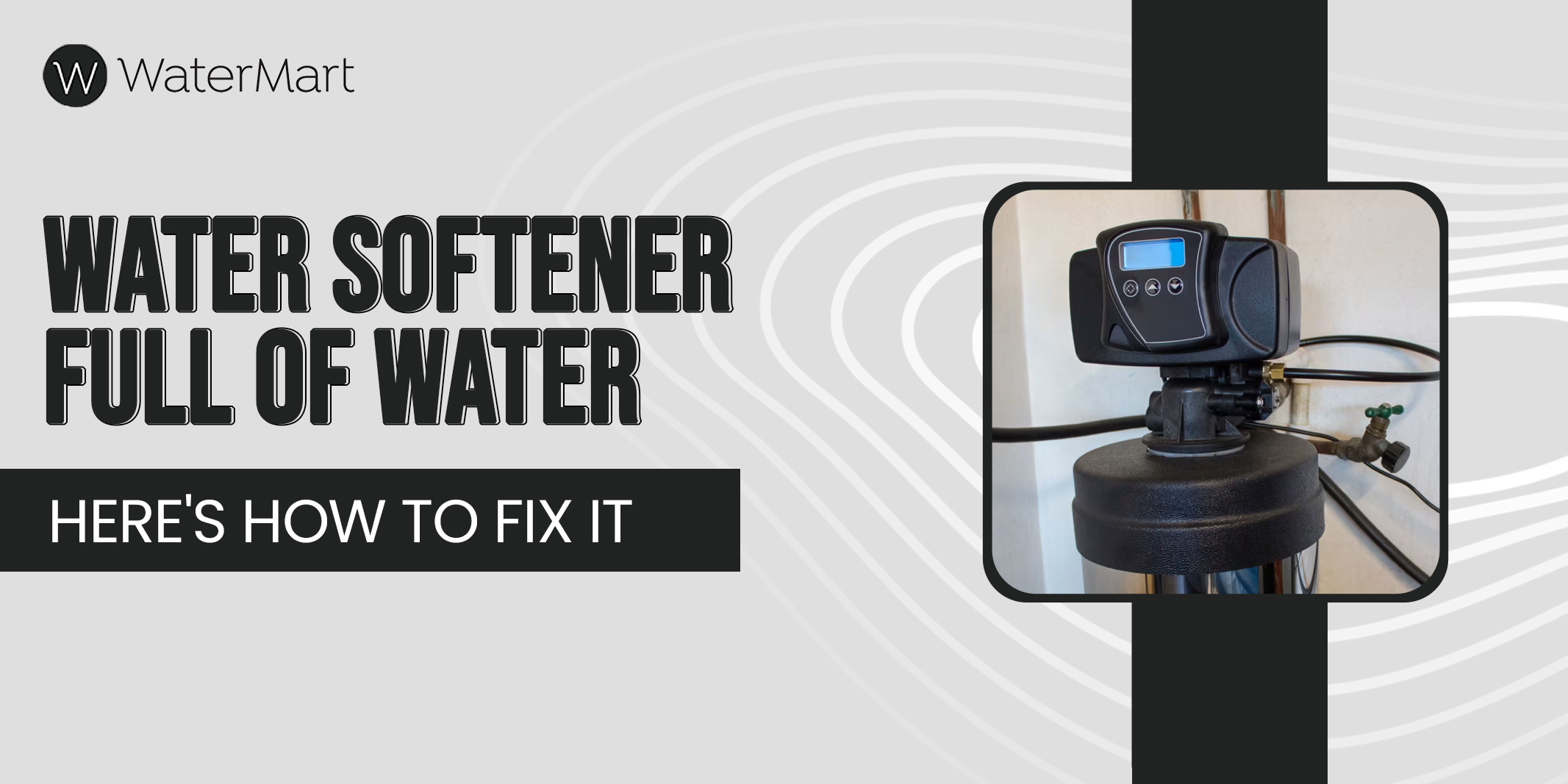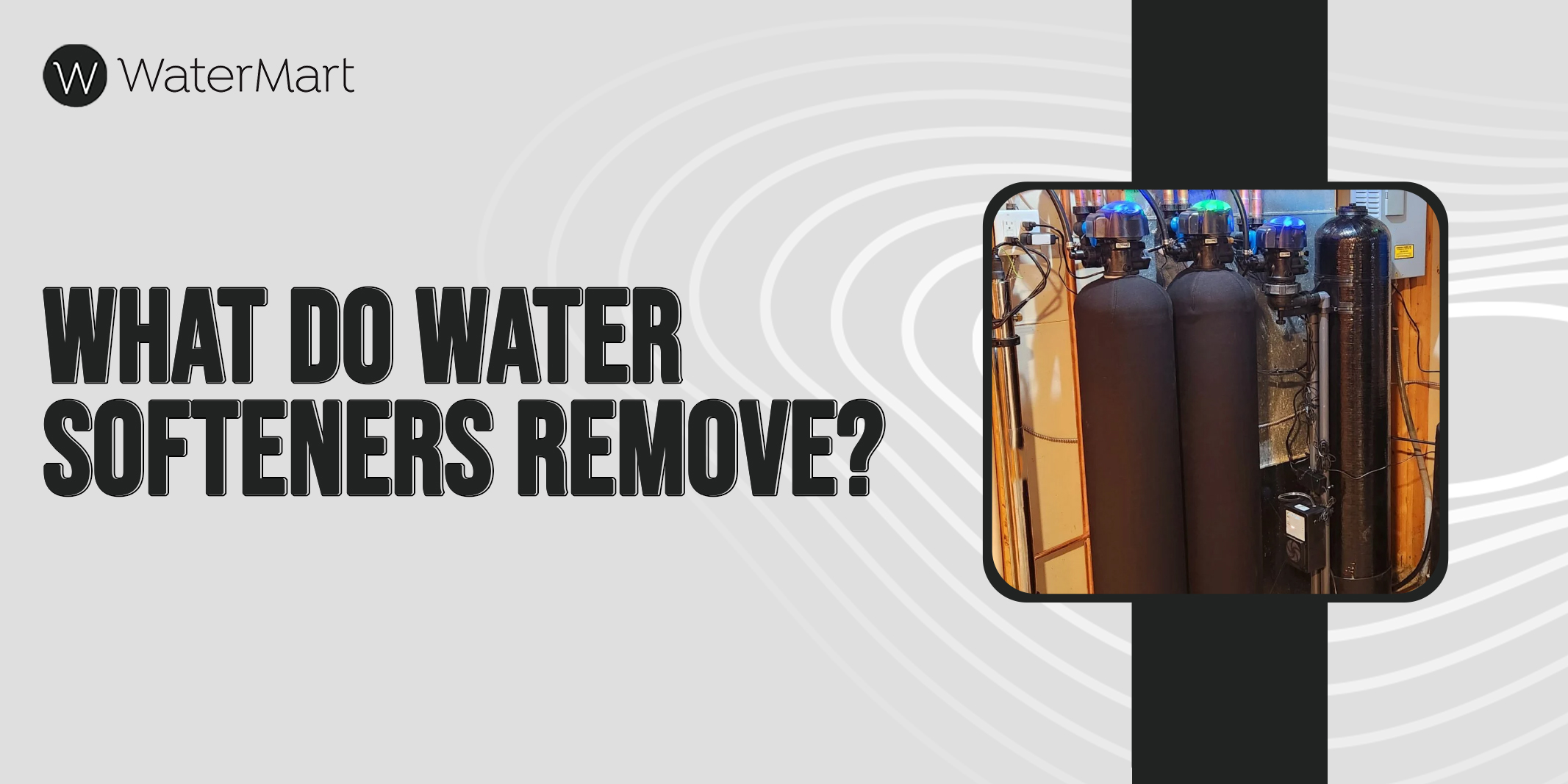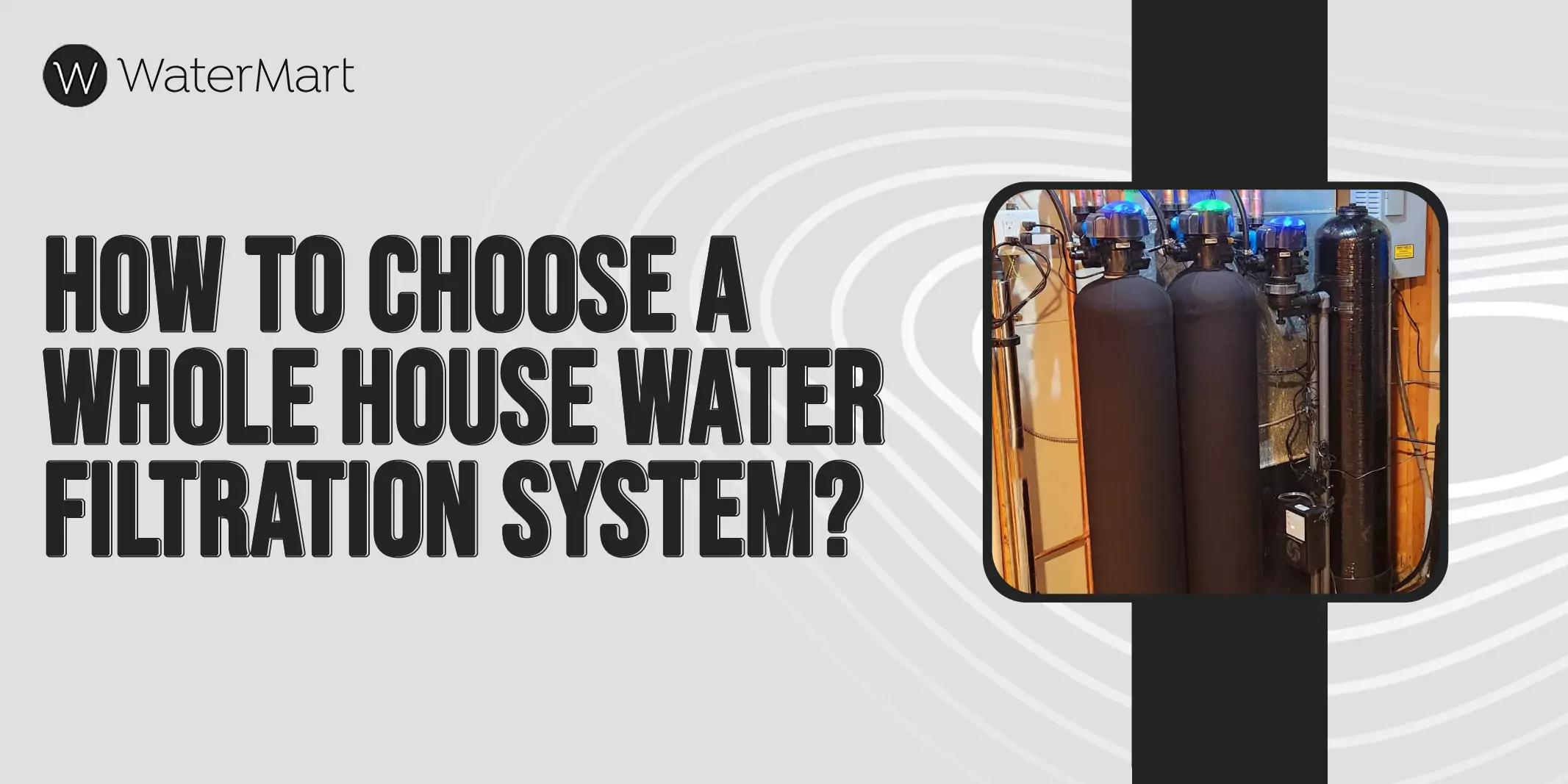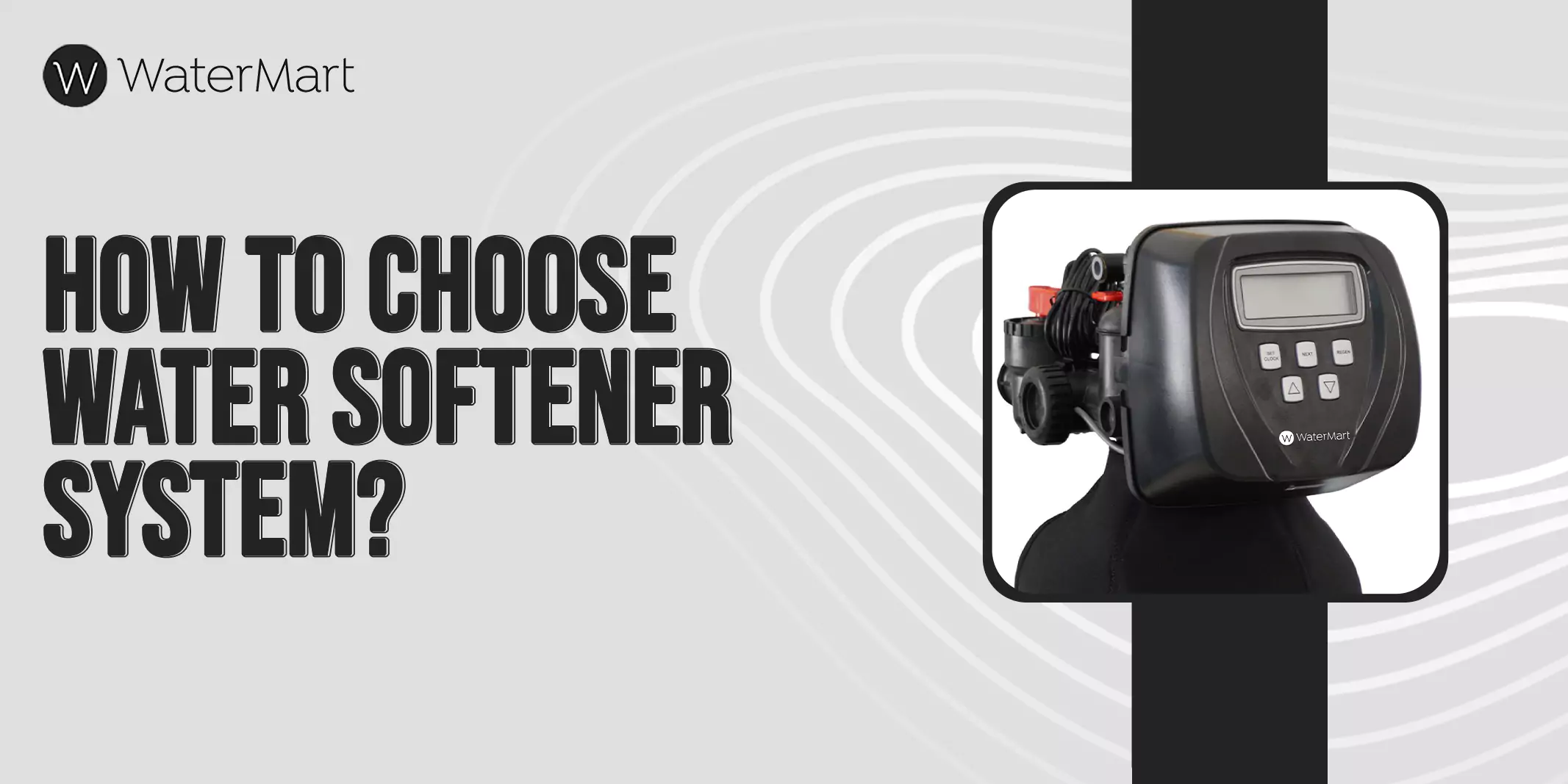Your cart is currently empty!
How Long Do Reverse Osmosis Filters Last? Tips For Better Functionality!
Are you tired of guessing when to change your water filters? Sick of dealing with unclear water quality? Reverse osmosis (RO) systems are your best bet. These systems use a special membrane to remove dirt and chlorine, making your water safe to drink.
But how long do reverse osmosis filters last, and how often do you need to change them? That’s what we’ll cover in this article.
Whether you’re new to RO systems or a seasoned pro, this guide will help you understand filter lifespan, factors that affect it, and best maintenance practices.
Warning Signs Your Reverse Osmosis System Is in Trouble
Reverse osmosis systems bring many advantages. However, these systems aren’t immune to failure. Below are some warning signs that it might be time to replace or maintain your system.
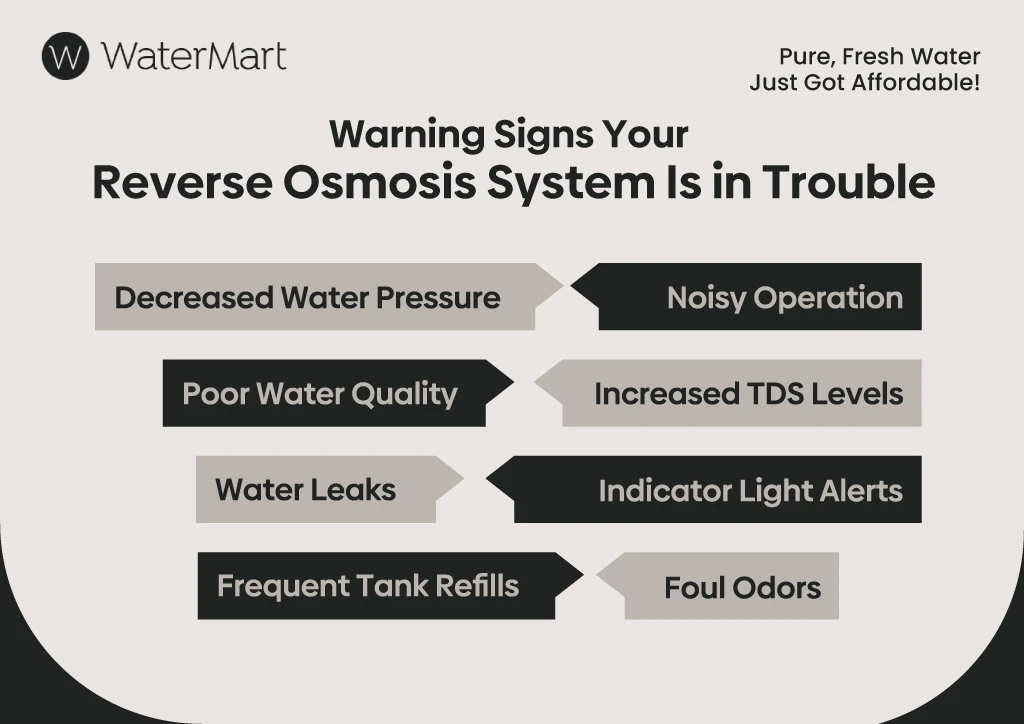
Decreased Water Pressure
Weak water flow is a clear sign of trouble. It often means your filters are clogged with contaminants, blocking the water from flowing freely. Cleaning or replacing the filters should restore the pressure.
Poor Water Quality
If your water tastes off or looks cloudy, your RO membrane might be worn out. A damaged membrane can’t filter impurities properly, leading to poor water quality. Replacing the membrane can solve this problem.
Water Leaks
Leaks around your system are a red flag. They can be caused by worn-out seals or loose connections. Inspect all fittings and replace any faulty parts to prevent water damage and maintain system efficiency.
Frequent Tank Refills
If your storage tank is constantly refilling, it may indicate inefficiency. This could be due to a faulty valve or clogged filter. Check and clean the system to ensure it operates smoothly.
Noisy Operation
Strange noises from your RO system usually mean trapped air or a failing pump. Air in the system or mechanical issues can cause these sounds. Bleed the system and check the pump to fix the noise.
Increased TDS Levels
A rise in Total Dissolved Solids (TDS) means your water isn’t being filtered properly. This typically points to a problem with the RO membrane. Test the water and replace the membrane if necessary.
Foul Odors
Bad smells from your water can signal bacterial growth within the system. Regular cleaning and sanitizing can prevent this issue and keep your water fresh and odor-free.
Indicator Light Alerts
Pay attention to any indicator lights on your system. They can warn you about problems like low pressure or high TDS levels. Follow the manual’s troubleshooting tips to address these alerts quickly.
What’s The Lifespan of Different Reverse Osmosis System Parts?
Reverse osmosis systems can last a long time if taken care of. Different parts need replacing at different times. Let’s look at how often different reverse osmosis filters last.
Sediment Pre-Filters
Sediment pre-filters are the first line of defense in a reverse osmosis system. They catch dirt, rust, and other large particles before they reach the RO membrane. Typically, these filters last between 6 to 12 months. Regularly changing these filters keeps the water flowing smoothly and protects the RO membrane from larger debris.
Activated Carbon Pre-Filters
Activated carbon pre-filters remove chlorine, pesticides, and other organic chemicals from the water. Chlorine can damage the RO membrane, so these filters are essential. They usually last about 6 to 12 months. Changing them on schedule is important for preventing the build-up of contaminants that could otherwise pass through to the membrane.
RO Membrane
The RO membrane is the heart of the reverse osmosis system. It filters out the tiniest impurities, including heavy metals and microorganisms. RO membranes typically last for 2-5 years.. Its longevity depends on the quality of your water and how often you use the system.
Carbon Polishing Filter
The carbon polishing filter—also known as a post-filter—removes any remaining odors or chemical tastes after the water passes through the RO membrane. Wondering how long do carbon filters last? The answer is around 12 months. After it reaches the end of its life, replace it to ensure your water stays fresh and pleasant to drink.
Remineralization Post-Filter
Some RO systems have a remineralization post-filter. It adds minerals like calcium and magnesium back into the water. These filters last around 12 months. Replacing them regularly keeps your water healthy and full of good minerals.
Tips For Making Your RO Filters Last Longer
As a homeowner, you can take steps to extend the life of your reverse osmosis system. Improving its lifespan ensures you get the best performance and value. Here’s how to make your RO filters last longer.
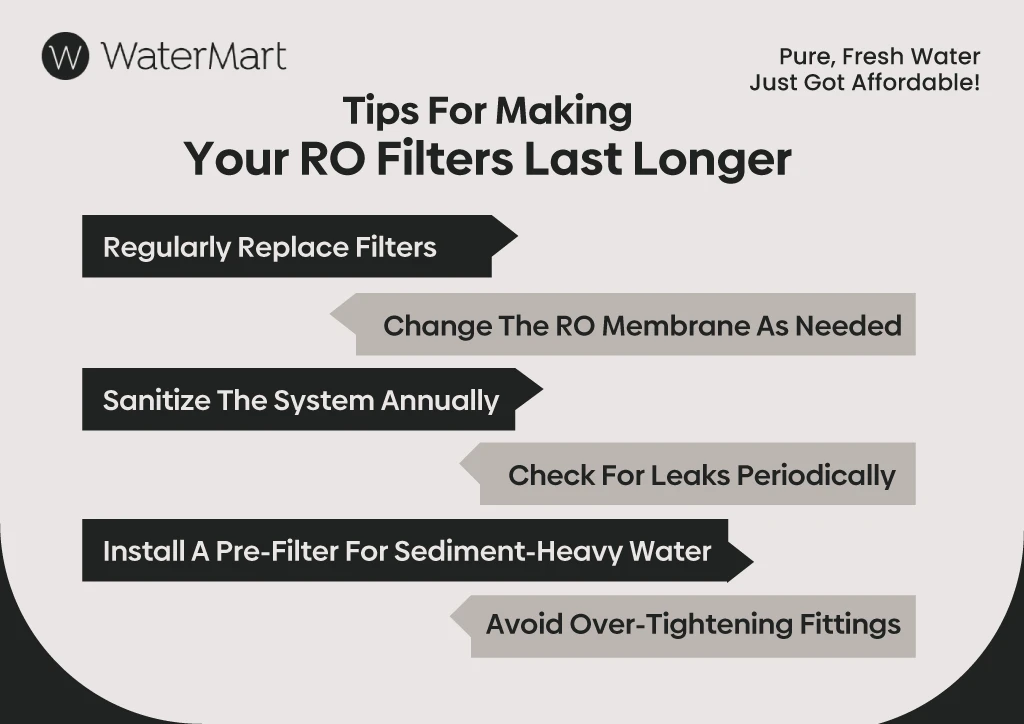
Regularly Replace Filters
Filters in your filter catch dirt and particles. Over time, they get clogged and lose efficiency. Replace them according to the manufacturer’s guidelines to keep your system running smoothly. Regular filter changes ensure clean, fresh water for your home.
Change The RO Membrane As Needed
The RO membrane purifies your water, removing impurities. When you notice a drop in water quality or pressure, it’s time to replace it. Check your system’s manual for specific instructions and follow them carefully to keep your water clean and safe.
Sanitize The System Annually
Sanitizing your filter once a year prevents bacteria buildup and keeps your water fresh. Follow the manufacturer’s instructions for a thorough clean. Disconnect the system, clean each part, and reassemble it to maintain optimal performance.
Check For Leaks Periodically
Regularly inspect your system for leaks. Even small leaks can cause significant problems. Tighten loose connections and replace any worn parts to keep your system running efficiently. Regular checks help prevent water damage and maintain system performance.
Install A Pre-Filter For Sediment-Heavy Water
If your water contains a lot of sediment, adding a pre-filter can help. It captures large particles before they reach your main system, preventing clogs and extending the life of your system. Follow the manufacturer’s installation instructions for best results.
Avoid Over-Tightening Fittings
When adjusting fittings, be careful not to over tighten them. Excessive force can damage the components. Tighten just enough to prevent leaks. Proper adjustments help keep your system parts in good condition and prevent unnecessary damage.
Monitor Water Quality With A TDS Meter
A TDS meter helps you keep track of your water quality. Regular monitoring indicates when it’s time to change filters. By keeping an eye on water quality, you ensure your system is working efficiently and providing the best possible water for your home.
Key Features of a Reverse Osmosis System
A reverse osmosis system comes with several key features that help purify water for homeowners. When exploring different RO systems, you’ll want to look for:
- High-quality RO membrane: A high-quality RO membrane is essential for filtering out the smallest impurities. This key component removes contaminants effectively, ensuring the water you drink and use for cooking is safe and clean.
- Multiple filtration stages: Systems with multiple filtration stages can tackle a variety of contaminants. Each stage targets different impurities, providing thorough purification. For the best results, look for systems with at least three stages.
- NSF certification: NSF certification means the system meets strict safety and quality standards. It’s a sign that the RO system has been rigorously tested and is reliable. Always choose systems with this certification for peace of mind.
- Efficient water waste ratio: An efficient water waste ratio means less water is wasted during the filtration process. This helps conserve water and can lower your water bill. Opt for systems designed to minimize waste and use water efficiently.
- Remineralization filter: A remineralization filter adds essential minerals back into the purified water, improving taste and health benefits. This ensures your water is not only clean but also has a pleasant taste and necessary minerals.
- Leak detector and automatic shut-off: A leak detector and automatic shut-off feature prevent potential water damage by stopping the flow if a leak is detected. This provides extra protection for your home and peace of mind.
Get a Better Reverse Osmosis System Today
Are you tired of wondering if your drinking water is safe? Upgrade to WaterMart’s reverse osmosis water filter —pure, clean water with every sip. Our advanced RO systems eliminate harmful contaminants, including chemicals and bacteria, ensuring your family’s safety.
We offer systems with multiple filtration stages, customizable options, and features like remineralization filters and UV lights. These extras not only make your water safer but also enhance its taste and quality.
Whether you want to rent or buy, we’ve got you covered. Schedule a free water testing service with us today. Experience the difference that pure, safe water can make in your home with WaterMart’s RO systems.
Conclusion
Clean, safe drinking water used to be a luxury. Now, it’s a basic need everyone can meet. With the right reverse osmosis system, you can enjoy fresh, pure water daily. Upgrade your water filtration system and experience the difference. Drink better, live better.
FAQs
How often do you change RO filters?
RO filters need changing every 6 to 12 months. It depends on your water quality and usage. Regular maintenance ensures clean, safe drinking water. Check your system’s manual for specific guidelines.
How long do water filters last?
The lifespan of water filters varies. Sediment filters last 6 to 12 months, while carbon filters can last up to a year. Zero water filters typically last 2 to 3 months. Always refer to your filter’s manual for precise recommendations.
